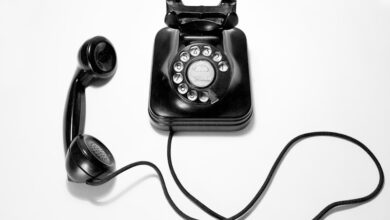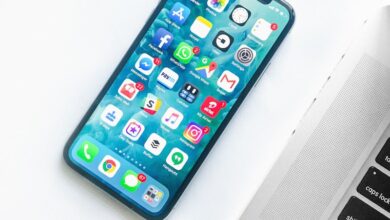Phone Formatting: The Intersection of Technology and Psychology

Have you ever wondered why your smartphone feels like an extension of yourself? It’s not just a device we use for communication and entertainment; it has become an integral part of our lives. One aspect that plays a significant role in this connection is phone formatting. In this article, we will explore the fascinating intersection of technology and psychology when it comes to phone formatting.
So, what exactly is phone formatting? Simply put, it refers to the customization and arrangement of apps, widgets, wallpapers, and other elements on your phone’s screen. It’s like personalizing your virtual world to reflect your preferences and personality. But there’s more to it than meets the eye.
The way we format our phones can have a profound impact on our mindset and emotions. For example, organizing apps into folders can create a sense of order and control, reducing the cognitive load and making it easier to find what we need. On the other hand, cluttered screens filled with numerous icons may lead to feelings of overwhelm and anxiety.
Colors also play a crucial role in phone formatting. Each color has its psychological significance and can evoke specific emotions. For instance, blue is often associated with calmness and productivity, while red signifies urgency or excitement. By choosing colors that resonate with us, we can create a visually appealing and emotionally satisfying experience every time we unlock our phones.
Furthermore, phone formatting can influence our behavior and habits. App placement and accessibility can shape our usage patterns. Placing frequently used apps prominently on the home screen encourages quick access, whereas burying addictive apps deep within folders can help reduce mindless scrolling.
In recent years, tech giants have recognized the importance of phone formatting in user experience. They have introduced features like dark mode and minimalist interfaces, catering to users’ desire for simplicity and reduced screen time. These advancements aim to strike a balance between technological convenience and mental well-being.
Unplugging to Reboot: The Psychological Benefits of Phone Formatting

Have you ever felt overwhelmed by the constant notifications, alerts, and distractions that come with owning a smartphone? It seems like we’re always connected, always reachable, and it can be incredibly exhausting. But what if I told you that there’s a way to reclaim your mental well-being and find peace in this digital age? Enter phone formatting—a simple yet powerful technique that can help you unplug and reboot your mind.
Phone formatting is the process of resetting your smartphone to its factory settings, essentially wiping away all the accumulated data, apps, and clutter that have built up over time. It’s like giving your phone a fresh start—a clean slate for you to customize according to your needs. But beyond its practical benefits, phone formatting also offers a range of psychological advantages that can significantly impact your well-being.

First and foremost, phone formatting helps break free from the addictive cycle of constant phone usage. Our smartphones have become extensions of ourselves, with studies showing that the average person checks their phone over 150 times a day. This excessive screen time not only affects our productivity but also takes a toll on our mental health. By formatting your phone, you create an opportunity to establish healthier habits, reducing dependency and regaining control over your time and attention.
Additionally, phone formatting promotes mindfulness and present-moment awareness. In today’s fast-paced world, we often find ourselves multitasking, constantly switching between apps and activities. This scattered focus prevents us from fully engaging with the present moment and can lead to increased stress and anxiety. When you format your phone, you eliminate unnecessary distractions and encourage a more mindful approach to life. You become more attuned to your surroundings, better able to savor experiences, and connect with others on a deeper level.

Moreover, phone formatting allows you to declutter your digital space and create a more organized and streamlined environment. Just like a cluttered physical space can create feelings of overwhelm and chaos, a cluttered digital space can have the same effect on your mind. By formatting your phone, you free up valuable storage space, delete unused apps, and organize your files, creating a sense of order and reducing mental clutter. This newfound simplicity promotes mental clarity, making it easier to focus and be productive.
Phone formatting offers numerous psychological benefits. It empowers you to break free from the constant distractions of the digital world, cultivate mindfulness, and create a more organized and harmonious digital environment. So, if you’re feeling overwhelmed or simply want to rejuvenate your mind, consider unplugging and rebooting through phone formatting. Your mental well-being will thank you for it.
The Hidden Impact of Phone Formatting: How It Shapes Our Digital Habits
Have you ever wondered how the way we format our phones can shape our digital habits? It may seem like a trivial aspect, but phone formatting plays a significant role in our daily lives. From the arrangement of apps to the choice of wallpaper, these seemingly small details have a hidden impact on our digital behavior.
Let’s start with the arrangement of apps on our home screens. Just like organizing physical objects on a desk, the way we organize our apps reflects our mindset and priorities. Are your most frequently used apps easily accessible, or are they buried within folders? By strategically placing apps based on frequency of use, we can optimize our digital workflow, saving time and increasing productivity.
Another aspect of phone formatting that influences our digital habits is the choice of wallpaper. Think about it – when you unlock your phone, what’s the first thing you see? The wallpaper sets the tone for your digital experience. A serene nature scene might evoke a sense of calm, while a vibrant cityscape could energize and inspire you. By selecting wallpapers that resonate with our emotions and goals, we can create an environment that motivates and uplifts us every time we pick up our phones.
Furthermore, the notification settings on our phones can greatly impact our focus and attention span. With constant notifications bombarding us throughout the day, it’s easy to get distracted and lose track of time. However, by customizing our notification settings, we can regain control over our digital lives. Prioritizing important notifications and muting nonessential ones allows us to stay focused on the task at hand without unnecessary interruptions.
Phone formatting also extends to the overall aesthetic and user interface. The visual design of an operating system can influence our perception of its usability and enjoyment. An intuitive and visually appealing interface can enhance our digital experience, making it more engaging and enjoyable. On the other hand, a cluttered or confusing interface may lead to frustration and hinder our usage.
Tech Therapy: Can Phone Formatting Improve Mental Well-being?
Introduction:
Have you ever stopped to think about the impact your smartphone has on your mental well-being? In today’s digital age, where our lives are intertwined with technology, it’s crucial to explore ways to nourish our mental health. One approach gaining attention is phone formatting—the act of decluttering and organizing your device for a more mindful tech experience. But can phone formatting truly improve your mental well-being? Let’s delve deeper into this intriguing concept.
The Power of Decluttering:

Just like tidying up our physical spaces can bring a sense of calm, decluttering our phones can do wonders for our mental state. When we’re constantly bombarded with notifications, overflowing app icons, and chaotic digital environments, it becomes challenging to find peace of mind. Phone formatting allows us to eliminate unnecessary distractions, creating a harmonious digital space that promotes focus and relaxation.
Simplifying Digital Life:
In many ways, our smartphones have become extensions of ourselves—a repository of memories, information, and constant connectivity. However, this constant stream of data can overwhelm our minds. By formatting our phones, we can take back control over our digital lives. Deleting unused apps, organizing folders, and setting up a minimalist home screen can help streamline our digital experiences, reducing anxiety and boosting productivity.
Enhancing Mindfulness:
Phone formatting isn’t just about decluttering; it’s also a powerful tool for fostering mindfulness. By curating a calming, visually pleasing layout on our devices, we create an environment that promotes tranquility and focus. Customizing wallpapers with serene landscapes or motivational quotes serves as gentle reminders to slow down, breathe, and engage with technology intentionally.
Reducing Digital Fatigue:
We’ve all experienced the exhaustion that comes from excessive screen time. Endless scrolling, social media comparisons, and information overload can leave us feeling drained. Phone formatting encourages us to establish healthy boundaries with technology. By limiting notifications, disabling unnecessary features, and organizing our apps thoughtfully, we can regain a sense of control, allowing for intentional and mindful device usage.
Conclusion:
Cracking the Code: Understanding the Psychology Behind Phone Formatting
Have you ever wondered why we get so attached to our smartphones? It’s not just about their sleek design or cutting-edge features; there’s something deeper at play. The psychology behind phone formatting holds the key to unraveling our strong emotional connection to these devices.
Imagine your smartphone as a personal assistant, constantly organizing and optimizing your life. The way it is formatted and organized plays a crucial role in how we interact with it on a daily basis. From the layout of icons on the home screen to the choice of wallpaper, each aspect of phone formatting has a psychological impact.
When it comes to phone formatting, simplicity is the name of the game. Our brains are wired to seek out patterns and structure, and a cluttered interface can overwhelm us mentally. By employing clean lines, intuitive icons, and logical app placement, phone manufacturers cater to our innate desire for order and efficiency. This simplified formatting puts us at ease and allows for seamless navigation through our device.
Colors also play a significant role in phone formatting and user experience. Different colors evoke different emotions, and manufacturers carefully choose hues that have a positive impact. For example, blue is often associated with trust and reliability, making it a popular choice for app icons related to communication or productivity. On the other hand, red can signal urgency or importance, frequently used for notifications or alerts. By leveraging color psychology, phone formatting enhances our emotional engagement with the device.
Another fascinating aspect of phone formatting lies in customization. From wallpapers to themes, users have the power to personalize their device according to their preferences and personality. This ability to create a unique digital space fosters a sense of ownership and self-expression. It’s like decorating your home with photos and ornaments that reflect who you are. Customization transforms the phone from a mere tool into an extension of ourselves.
Furthermore, phone formatting is designed to tap into our reward-seeking behavior. App developers employ psychological techniques, such as push notifications and badges, to trigger a sense of anticipation and engagement. These small cues activate our brain’s pleasure centers, making us more likely to check our phones repeatedly. The constant stream of new messages or updates taps into the principles of operant conditioning, reinforcing our bond with the device.

The psychology behind phone formatting is a fascinating field that sheds light on our profound attachment to smartphones. Through simplicity, color psychology, customization, and reward-driven design, manufacturers and app developers create interfaces that captivate our attention and evoke positive emotions. Understanding these psychological mechanisms can help us navigate our digital lives more consciously and make informed choices about our smartphone usage.




